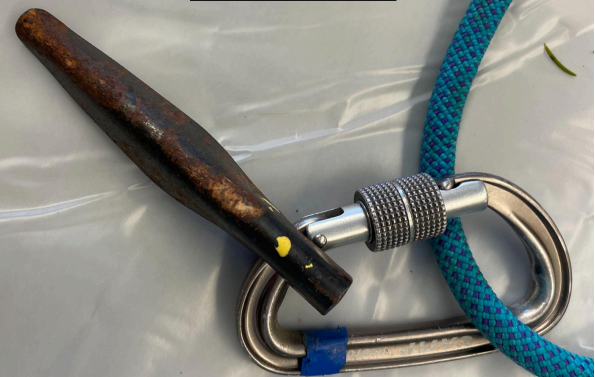Inexperience and weather were key factors in a climbing accident that killed three climbers and severely injured another in the North Cascades this spring.
48-year-old Vishnu Irigireddy of Renton, 63-year-old Tim Nguyen of Renton and 36-year-old Oleksander Martynenko of Bellevue died while descending a mountain in the Okanogan-Wenatchee Forest in May.
Their friend and fellow climber survived, even though all four were roped together.
That climber has been identified as Anton Tselykh who suffered broken ribs and a cracked skull in the accident.
The U.S. Forest Service and Okanogan County issued a report this week, detailing what happened, calling it a “catastrophic rappel anchor failure.”
According to the report, the four climbers spent 11 hours trying to reach the summit of North Early Winters Spires, a 7,760 ft granite spire.
Because of deteriorating weather and waning daylight, they decided to abandon the summit attempt and head down.
“It was evening,” the report says. “The climbing had taken longer than anticipated, and it had started to snow.”
The climbers sent a message to a friend using InReach, a satellite communications tool, then began their descent.
The report says the team was using a series of rappels and 60-meter ropes. Their ascent was in teams of two, but the report says they descended as a single team of four.
The climbers had issues securing anchors into the rocks before finally deciding to attach their ropes to a single piton, which is a peg or spike driven into the rock to support a climber or rope.
“According to the survivor’s recount, the team did not discuss the adequacy of the piton as a single anchor point,” the report says.
After just a few seconds of one climber rappelling, the anchor failed and came out of the rock, causing all four climbers to fall.
“It is estimated that the team fell between 100-200ft before reaching the ramp of snow, then fell an additional 400-500ft down the steep snow and rock slope before coming to rest just below treeline at an elevation of 6,148ft,” the report says.
Tselykh lost consciousness for several hours, then woke up to find two fellow climbers dead.
“There are no solid indicators as to how Climber 4 survived the fall, as Climbers 1, 2, and 4 all fell from the same height and were attached to the piton similarly,” it says.
Tselykh could not find the headlamp and got down from the mountain in the dark, eventually driving to town and calling to report the accident. He told the Methow Valley News it took him nine hours to get back to his car.
The conclusions
The report says it’s not clear exactly how much experience the team had with this type of route, but the surviving climber said “none of the climbers had a high level of experience with this genre of mixed snow/ice/rock alpine climbing.”
The report also says the route is typically recommended for climbing in the very early spring.
“This route should never be attempted during warm temperatures or times of high avalanche danger. It’s mandatory that the freezing level is staying below 5,000ft for this route to be safely attempted,” a guidebook says.
On the days of the climb, temperatures were between 40 and 53 degrees.
The report goes into a deeper analysis of the piton that failed, which was recovered by first responders. They found no obvious flaws with the piton itself, but instead focused on its placement.
The report writes of a trap known as the “expert halo” where one of the people on the team takes a role as leader and others on the team are less likely to question them.
“The less experienced Climber 4 stated that they had assumed that Climber 3 had assessed the single piton on the fourth rappel, and that no discussion occurred to bring the single-point anchor into question. It is otherwise unknown to what extent the expert halo cognitive bias may have contributed towards the team’s decision to use the single piton as their final rappel anchor.”
The report also cites a trend in mountain accidents of people making errors later in the day, in part because of fatigue and a sense of urgency.
COPYRIGHT 2025 BY KXLY. ALL RIGHTS RESERVED. THIS MATERIAL MAY NOT BE PUBLISHED, BROADCAST, REWRITTEN OR REDISTRIBUTED.
